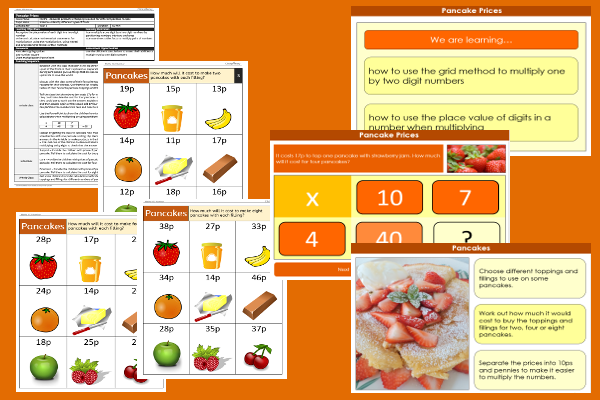Pancake Prices

This maths teaching pack for Key Stage Two gets the children to explain and model how to calculate number products to show the toppings and fillings that are needed for different pancake recipes using the grid multiplication method.
The class can identify and describe how to partition money amounts into tens and ones to make it easier to multiply the numbers when solving each calculation.
Download this teaching pack including a lesson plan, classroom activities and an interactive presentation to explain and model how to calculate number products to show the toppings and fillings that are needed for different pancake recipes using the grid multiplication method
Activities in this teaching pack include differentiated worksheets to select the prices of different pancake toppings and fillings to multiply by single digit numbers when using the grid method to solve each multiplication calculation to find the total cost of each type of pancake.
The interactive presentation gets the children to explore how to calculate the number products for the toppings and fillings that are needed for different pancake recipes using the grid multiplication method.
This lesson is part of a maths scheme of work to get the children to explain and model how to solve number problems using informal and formal techniques to multiply two by single digit numbers. There are teaching activities for shared learning, differentiated worksheets to support independent learning and interactive presentations to introduce concepts and key skills.
-

Determinant Lists
Explain and model how to make lists of objects used and found in different locations to match the correct determinants of a and an
-

English SPAG Assessment
Assess abilities in composing sentences for fiction and non-fiction using the correct spellings, punctuation marks and grammar vocabulary phrases
-

Maths Arithmetic Assessment
Assess abilities in solving arithmetic number problems for addition, subtraction, multiplication and division when working with informal and formal written calculations
-

Environment
Identify and describe some of the special landscapes and locations that can be found in the world and reflect on how they can be protected and preserved for the future
